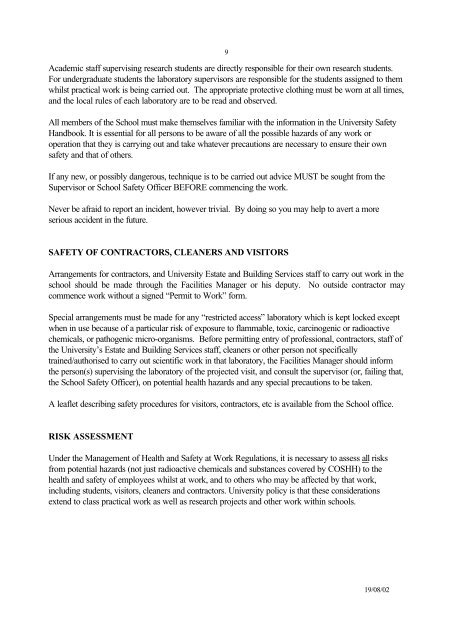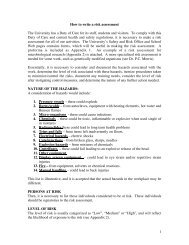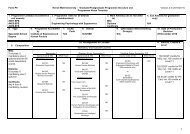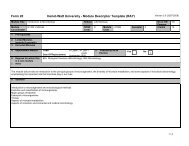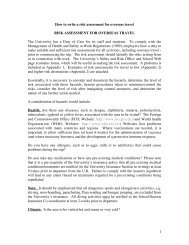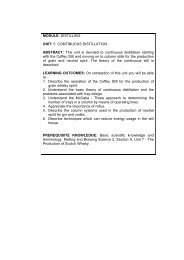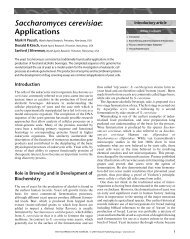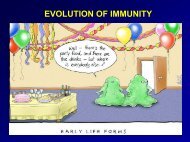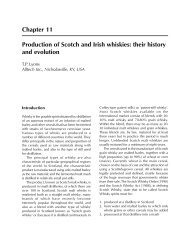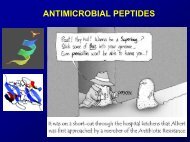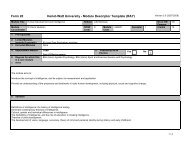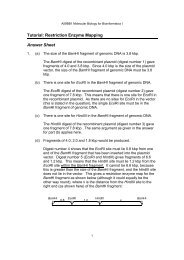SAFETY BOOKLET - School of Life Sciences - Heriot-Watt University
SAFETY BOOKLET - School of Life Sciences - Heriot-Watt University
SAFETY BOOKLET - School of Life Sciences - Heriot-Watt University
Create successful ePaper yourself
Turn your PDF publications into a flip-book with our unique Google optimized e-Paper software.
9Academic staff supervising research students are directly responsible for their own research students.For undergraduate students the laboratory supervisors are responsible for the students assigned to themwhilst practical work is being carried out. The appropriate protective clothing must be worn at all times,and the local rules <strong>of</strong> each laboratory are to be read and observed.All members <strong>of</strong> the <strong>School</strong> must make themselves familiar with the information in the <strong>University</strong> SafetyHandbook. It is essential for all persons to be aware <strong>of</strong> all the possible hazards <strong>of</strong> any work oroperation that they is carrying out and take whatever precautions are necessary to ensure their ownsafety and that <strong>of</strong> others.If any new, or possibly dangerous, technique is to be carried out advice MUST be sought from theSupervisor or <strong>School</strong> Safety Officer BEFORE commencing the work.Never be afraid to report an incident, however trivial. By doing so you may help to avert a moreserious accident in the future.<strong>SAFETY</strong> OF CONTRACTORS, CLEANERS AND VISITORSArrangements for contractors, and <strong>University</strong> Estate and Building Services staff to carry out work in theschool should be made through the Facilities Manager or his deputy. No outside contractor maycommence work without a signed “Permit to Work” form.Special arrangements must be made for any “restricted access” laboratory which is kept locked exceptwhen in use because <strong>of</strong> a particular risk <strong>of</strong> exposure to flammable, toxic, carcinogenic or radioactivechemicals, or pathogenic micro-organisms. Before permitting entry <strong>of</strong> pr<strong>of</strong>essional, contractors, staff <strong>of</strong>the <strong>University</strong>’s Estate and Building Services staff, cleaners or other person not specificallytrained/authorised to carry out scientific work in that laboratory, the Facilities Manager should informthe person(s) supervising the laboratory <strong>of</strong> the projected visit, and consult the supervisor (or, failing that,the <strong>School</strong> Safety Officer), on potential health hazards and any special precautions to be taken.A leaflet describing safety procedures for visitors, contractors, etc is available from the <strong>School</strong> <strong>of</strong>fice.RISK ASSESSMENTUnder the Management <strong>of</strong> Health and Safety at Work Regulations, it is necessary to assess all risksfrom potential hazards (not just radioactive chemicals and substances covered by COSHH) to thehealth and safety <strong>of</strong> employees whilst at work, and to others who may be affected by that work,including students, visitors, cleaners and contractors. <strong>University</strong> policy is that these considerationsextend to class practical work as well as research projects and other work within schools.19/08/02


